The city of Milwaukee is closely connected to Germany. Many German immigrants moved to the city at Lake Michigan in mid-19th century. Although the citizens generally do not speak any German, the connections are still obvious. Many students, not only those who learn German, have German sounding family names (e.g. Dittl, Erdmann, Foersterling, Geier, Groeschl, Kuglitsch, Scharfenberger, Schumacher, Schwab or Weiss).
As many settlers missed German beer when they moved to Milwaukee, they founded their own breweries in the city. This is why Milwaukee is a traditional American brewing city although the biggest companies do not produce their beer in the city anymore. However, even the breweries often have German names such as Miller, Pabst, Leinenkugel or Schlitz. In 1860 over a third of Milwaukee’s population were native Germans (to learn more about the history of Milwaukee visit: https://milwaukeehistory.net/education/milwaukee-timeline/).
When former German Chancellor Helmut Kohl passed away, Bill Clinton gave a speech during his memorial in the European Parliament. In his speech, he mentioned Milwaukee (https://www.youtube.com/watch?v=Bses9QRRyIk 7:16 – 7:45) and recognized it as the “most German city” in the United States. Kohl and Clinton had even visited MGIS, the German elementary school my school cooperates with.
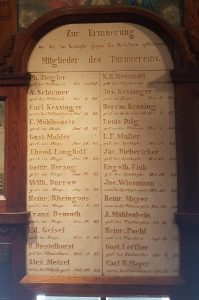
To further get to know the history of the city, I went to the event “Doors Open Milwaukee” (www.doorsopenmilwaukee.org). More than 150 buildings and historic places opened their doors for free – even those who do not usually open to the public. The citizens of Milwaukee seem to underestimate the beauty of their city sometimes. With Chicago only 90 minutes away, there is a tough competitor close to the city. However, I really like the combination of the historical identity of the city and its vitality. You can see the huge German influence and history throughout the whole city. Not only because of advertisements for German-originated companies like the breweries; there are a lot of German restaurants or signs in German. I took the first picture in the historic Turner building (http://www.milwaukeeturners.org/). It is a German memorial for the men who died fighting against the rebellion. German settlers constructed the building for their gymnastic club.

Nowadays it is not only used for gymnastics. The basement contains a rock climbing hall and the ballroom is used for concerts, meetings and weddings.
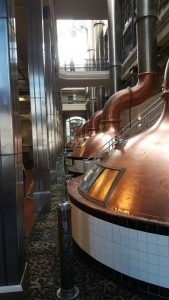
Another example for vital German history in Milwaukee is “The Brewhouse Inn & Suites” (http://www.brewhousesuites.com/). It is a hotel in Downtown Milwaukee established in a former brewery building of the Pabst brewery. The German-originated brewery began the production in mid-19th century. The brewing process took place in this specific building which meanwhile is a hotel. The building’s history is still visible in the hotel.
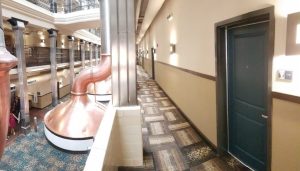
The old fermentation tanks are in the middle of the second floor. Even though the brewery moved to another city many years ago, the beer industry is still part of the identity of the city.
Not all Milwaukeean settlers in mid-19th century were Germans. The first site I visited was a Greek Orthodox Church founded by Greek settlers during that time. There are also Polish and Dutch influences throughout the city. However, the Germans were the biggest immigrant group during that time. It is fascinating to me how visible the German roots are and how active the German community is. There are several “Oktoberfests” in the city, many German restaurants and, of course, a German elementary school (MGIS) and the middle and high school with a German department (MSL).
Before I came here, almost no one of my friends and family ever heard of Milwaukee; once I said: “It’s close to Chicago”, they could at least imagine in which area I would live the next months. But Milwaukee is so much more than just a medium-sized city only 90 minutes away from Chicago. The industrial history is still an important part of the city’s identity. Though most of the old breweries relocated their business, their buildings are still in active use.
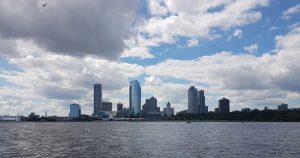
Many historic buildings are meanwhile used for modern purposes. This combines modernism (Milwaukee has a nice skyline, too) with the history of the city and keeps the city vivid and alive.


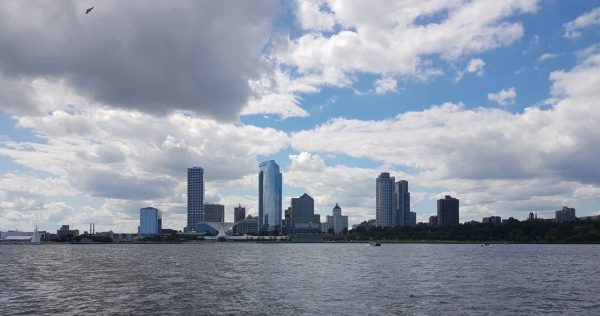


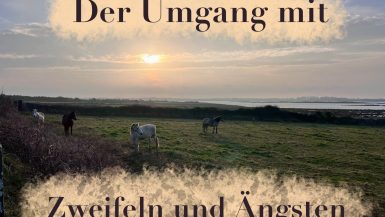
Interessante Geschichte. Ein Besuch dieser Stadt steht nun auf meiner “bucket list”.